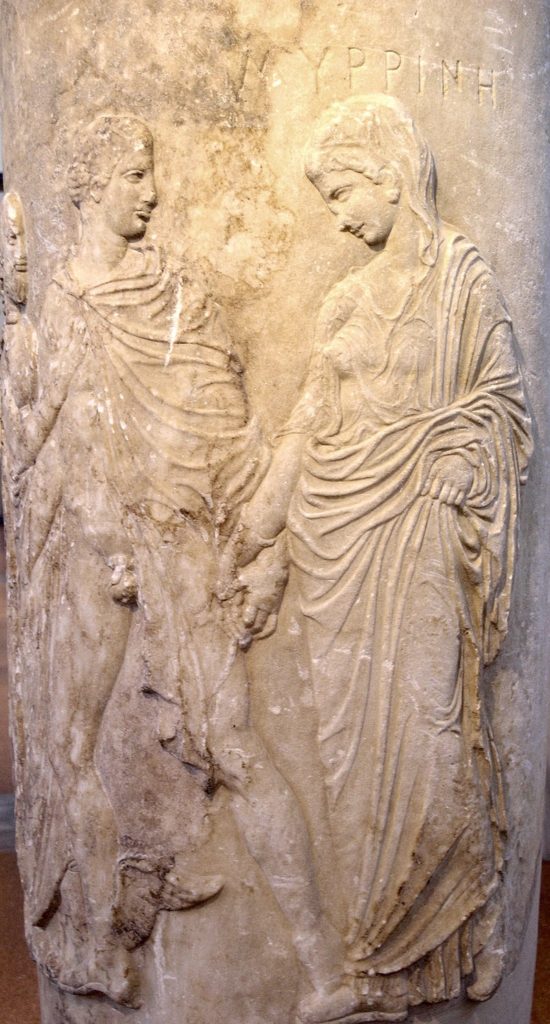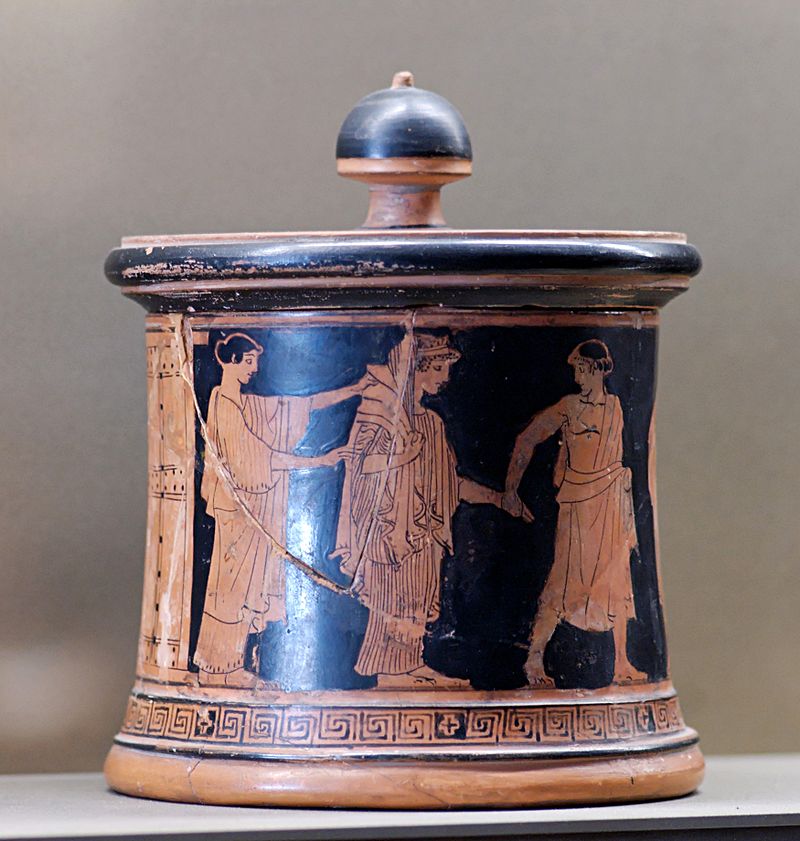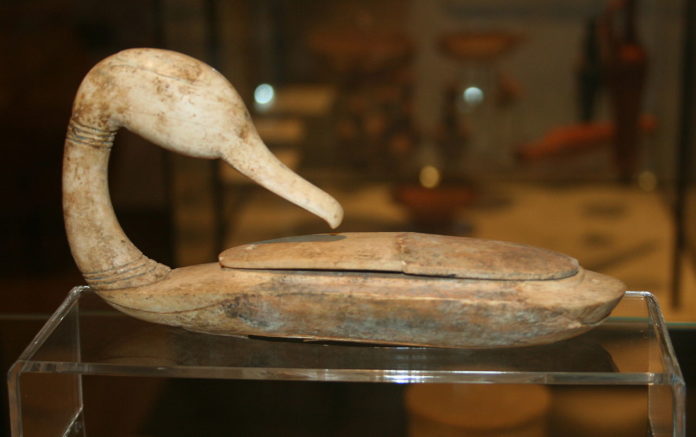Information
Ancient Greeks Used Exotic, Dangerous Cosmetics in Eternal Search for Beauty
In the modern world of today we are privileged to take for granted that the ingredients in our cosmetics are safe. However, it is only recently that cosmetic manufacturers have taken on the responsibility to ensure that they will do no harm.
In the ancient world, as a matter of fact, lead was one of the most widely-used substances in makeup. Known today to cause severe developmental delays, infertility and dementia, it was used in a paste form, much like today’s foundation, to whiten the complexion and make a woman look more youthful.
It is believed that the Greeks were the first to use such ingredients in their makeup, despite a general distaste for the use of cosmetics (at least according to the writers of the time, who of course were exclusively male). Some Greeks of the day moralized that makeup was only used as a trick, by lower-class women or prostitutes, in order to lure men.
However, in reality, it is thought that women of all classes, both single and married, actually used cosmetics of all kinds, both to brighten the skin and to highlight their features.
The Greek word “kosmetika” is of course the root of the English word ‘cosmetics.’ However, in its ancient form, the word meant any preparations which protected the hair, face, and teeth. The term for beautifying make-up was “to kommotikon.”
Ancient Romans, who adopted so much from Greece, took up the practice of using both white and red lead in facial makeup, and, with few exceptions, the extraordinarily pale look this imparted continued to be popular even into the eighteenth century.
However, using these lead-based pigments actually ended up causing disfigurement — along with the other, much more serious maladies which surely occurred in those days as well, although they were never linked to lead in those times.
Kevin Jones, from New York City’s Fashion Institute of Design and Merchandising Museum, explained in the NBC News report that “It would eat the skin away, causing all sorts of scarring. And the way they covered that up was to apply thicker amounts of the makeup, which would then exacerbate the situation.”
Perhaps in the most disturbing visual of all, it was recorded in ancient times that lizard excrement, of all things, was used to combat wrinkles.
However, as much as we may scoff at ancient wisdom such as that, the modern cosmetic industry is still making use of time-honored medicaments such as snail mucin, or the excrement that they trail behind them as they move, which has made an appearance in recent years as a popular skin care ingredient.
The publication Women’s Health raved about its “hydrating properties,” saying that skin can be “softer, more moisturized and glowing with consistent use of snail mucin.”
Cleopatra — Queen of the Nile, Makeup Maven
Cleopatra, the Queen of the Nile, who was the last descendant in the Macedonian Ptolemaic dynasty, was known not only for her power as the ruler of Egypt but for her alluring powers over men as well — and she amazingly even authored her own book on cosmetics.
As evidenced by myriad representations of other women in Egyptian art, she undoubtedly used kohl, a combination of oils and powdered metals — usually lead, antimony, manganese or copper — as an eyeliner, along with an array of other cosmetics, including eyeshadow and blush.
However, we know now, according to dermatologist Dr. Joel Schlessinger, that using these substances around the eyes leads to “irritability, insomnia and mental decrease,” according to a recent NBC News report.
Greek women also used more natural ingredients, such as red ochre from the earth, and dye extracted from lichen, for rouge, and ashes and soot for eyebrow color. Saffron, derived from the pistils of the crocus flower, was used as a rouge to give color to the cheeks.

 Fresco”The Saffron Gatherers” from Akrotiri, Santorini. Minoan civilization. Credit: Wikimedia Commons
Fresco”The Saffron Gatherers” from Akrotiri, Santorini. Minoan civilization. Credit: Wikimedia CommonsThe most widely-used eyeliner in ancient times, however, was derived from the element antimony, which according to the journal Nature is “poisonous by inhalation and ingestion,” and is carcinogenic as well.
Ocher, the naturally-occurring pigment from the earth, which occurs all around the globe, can be seen on portraits of Queen Nefertari, who lived in 1255 BC, which decorate the walls of her tomb. Cosmetics used by the ancient Greeks and Egyptians were not only for beautifying the face, but were used for their more practical value as well.
Since very ancient times, skin moisturizers have been made from animal fats, including lanolin from sheep’s wool, and plant oils. Wood ash has been combined with fats to make soap in a process which continues almost unchanged to this day, when lye, which is derived from wood ash, is combined with olive or other fats and oils to make our modern soaps.
Perfumes from the Odyssey
Historians have noted that Greeks were known to have made perfume as far back as the Middle Bronze Age, from the 14th to the 13th century BC. Such toiletries were first mentioned in Homer’s works the Iliad and the Odyssey, which were written in the 8th century BC.
To make perfumes, plants, flowers, spices, and fragrant woods, including myrrh, rose, and cinnamon, would be infused in oils. Since oil was used as the base, most perfumes were in the form of a thick paste. This necessitated the use of a special spoon-like tool to extract it from its containers.
Amazingly, such implements have even been excavated in England, as part of a Roman settlement there. A bar brooch found there featured several miniaturized bronze tools hanging from it — one of them shaped like a tiny spoon, which was most likely used with solid perfume.
In ancient times, perfumes were used for the pure pleasure they gave, as well as to seduce; due to their labor-intensive manufacture, they were also a status symbol and were used in rituals (especially in burials).
 Relief from a carved funerary lekythos at the National Archaeological Museum of Athens, showing Hermes conducting the deceased, Myrrhine, to Hades. c. 430–420 BC. Credit: Wikimedia Commons
Relief from a carved funerary lekythos at the National Archaeological Museum of Athens, showing Hermes conducting the deceased, Myrrhine, to Hades. c. 430–420 BC. Credit: Wikimedia CommonsEgyptian priests were known to anoint statues of gods with scented oils — and even applied make-up to them as part of their religious rituals.
Just as in Egypt, ancient Greeks often left their best cosmetics and perfumes in tombs to accompany their dead. Lekythoi, the graceful vessels used for storing fine oils and perfumes, were often decorated with themes related to burial and traveling onto the next life, when they were used for this purpose.
Pyxes, or decorated boxes, would also be left with bodies in their resting places, along with vessels called alabastrons, used for creams and ointment in Minoan and Mycenaean civilizations.
Cleopatra Perfume
Intriguingly, in the 1970’s Italian chemist Giuseppe Donato recreated some fragrances from ancient texts; some have even been produced commercially, including Donato and Seefried’s “Cleopatra” perfume, based on one worn by the Egyptian queen.
Much as in sausages, where it is usually best not to know how they are made, hair dye in ancient times was full of stomach-wrenching ingredients.
Dyes, which are thought to have been used by both sexes, could be used to either make hair darker or lighter. The dye to darken hair was made by leaving leeches to rot in wine for forty days.
The other, perhaps marginally less disgusting, consisted of a mixture of beechwood ash and goat fat to make hair lighter.
It is also recorded that in order to achieve gleaming white teeth, ancient Greeks would use ashes to clean them.
Perhaps all these things were worthwhile, perhaps not — but it just goes to show how far human beings would go — and still do — in order to improve their looks.
Category: English
News
Information
Key words:



